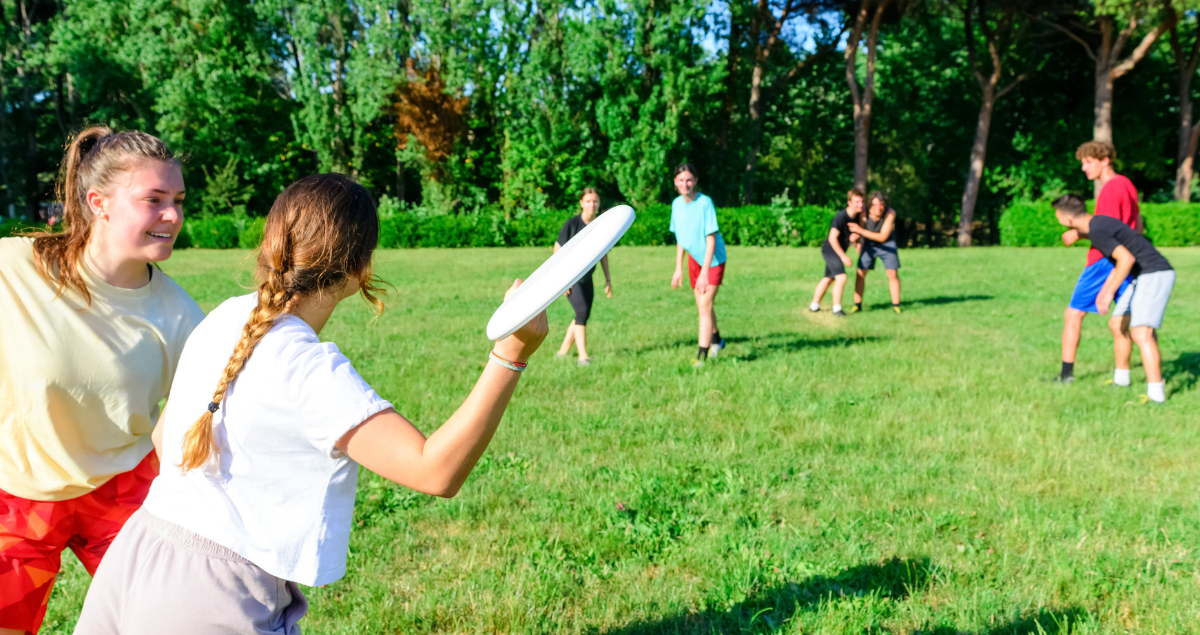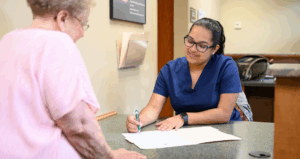Staying physically active is crucial for teen health and mental well-being. Although some teenagers get regular exercise through school or local sports teams, others need a different environment for exercise success. Did you know that staying active can boost a teenager’s mood and energy levels? According to the CDC, children and adolescents ages 6–17 should get at least 60 minutes of moderate-to-vigorous physical activity every day.
However, only about one in four high school students get the recommended hour a day of physical activity, according to the American Heart Association. In this month’s Get Moving Series, we are going to look at ways to get your teen energized!
Indoor Exercises for Teen Health
The great thing about indoor exercises is that your teenagers can do them at home, in the gym or on the go. Equipment can be used but isn’t necessary, and your teens can choose whether to exercise alone or with workout buddies. Rotating through the following three categories can build a great foundation for teen health that grows into a lifetime habit.
Cardio
- Aerobics: Follow along with workout videos or catch a class at the gym.
- Jumping: Burpees, jumping jacks, jumping rope, froggy jumps and box jumps offer effective workout options that combine strength and cardio.
- Cycling: Spin classes are great at the gym or on home equipment.
Strength Training
- Bodyweight Exercises: Push-ups, squats, lunges and planks don’t require any extra equipment.
- Resistance Bands: These small, portable bands can be used for various exercises like bicep curls, shoulder presses and leg workouts. Plus, they’re perfect for traveling.
Flexibility and Balance
- Yoga: Not only can yoga improve flexibility and strength, it also helps with mental focus.
- Pilates: With a focus on strength and stability, your teen may be surprised at the learning curve when trying Pilates for the first time.
- Stretching Routines: Tried and true, these routines help prevent injuries and improve flexibility.
Outdoor Activities for Teen Health
Regular outdoor exercise can help teens grow stronger and more flexible while improving their heart health. Being active outdoors is a natural booster for mental health, and it can help teenagers feel less stressed and more positive.
- Recreational Play: Whether teens gather friends to play tennis or soccer at the community field, shoot hoops at the local basketball court, or set up a volleyball net in the park, recreational sports keep it fun and provide social interaction.
- Adventure and Exploration: Explore the great outdoors and take on new adventures. Try geocaching, go on a nature scavenger hunt or organize a group hike to discover new places and enjoy the beauty of nature. Nightly walks with the pup, cross country running or jogging, skateboarding and cycling help teens clear their heads and build their endurance. Fishing, boating, kayaking, rock climbing and canoeing require special equipment, but teenagers learn to trust their instincts.
Teen Health Efforts Should Be Fun!
Getting teenagers interested in exercise can be a fun challenge! Here are some effective strategies:
- Courses: Use household items to create a fun and challenging obstacle course or try laser tag or paintball.
- Technology-Enhanced Workouts: Many fitness apps, games or fitness trackers offer structured workout plans and track progress in addition to offering challenges, social features and rewards that can make working out more engaging.
- Exergaming: Use gaming consoles with fitness games like Just Dance, Ring Fit Adventure or Wii Sports, and they’ll have so much fun that they’ll forget they’re working out.
- Hula Hooping: It may seem old school, but it’s gaining popularity with Gen Alpha teens.
How Can Parents and Grandparents Offer Support?
- Set Realistic Goals: Help your teens set achievable goals and celebrate progress. This can boost their motivation and sense of accomplishment.
- Lead by Example: Show enthusiasm for being active. When teens see adults enjoying exercise, they’re more likely to get on board.
- Make Exercise Convenient: Encourage activities that are easy to fit into their already-established routines. The closer it is to home or school, the more likely they are to participate.
- Provide Access to Facilities When Possible: Not all teens have easy access to sports facilities, equipment or safe places to exercise. Finding local options or community programs can help overcome this barrier and may encourage them to invite friends.
- Encourage Exploration: Let them try different things without pressure. Sometimes, the right activity is something they haven’t discovered yet.
- Resist the Urge: Sometimes, advice or suggestions from parents can create stress. It’s important to foster a supportive and non-judgmental environment.
Supporting Your Commitment to Health and Wellness
There are many activities teens can enjoy right here in Live Oak. Take the initiative to explore and make the most of the opportunities around you. Encourage your teen to set a small health goal and increase each month. Staying active benefits your teen’s health and your family dynamics, and incorporating more physical activity into your routines doesn’t require significant time or financial investments.
Challenge yourself to be creative with strategies to stay active with your family, making fitness a fun and integral part of your daily lives. ACV Health wants to support your commitment to health and wellness. Stay tuned for more tips and updates.
Disclaimer: See your primary care physician before starting any new routines. This blog is not intended as medical advice.




